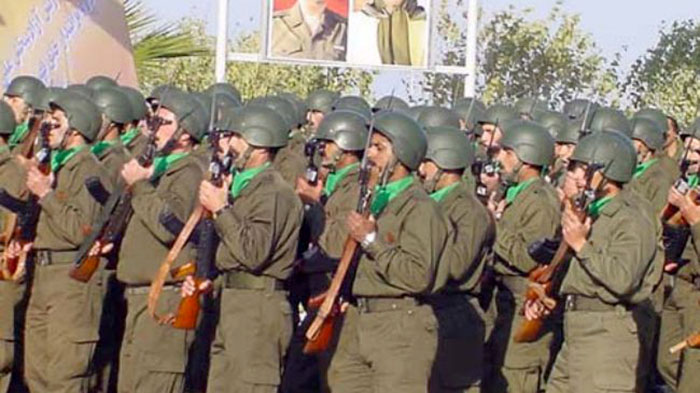When it comes to a nation’s fate, sometimes the theory “the enemy of my enemy is my friend” is of little benefit.
We have seen it before in countries such as Iraq, where the US decided to support certain Islamist factions of the Iraqi opposition against the Saddam Hussein regime without considering the long-term consequences or possibility that these same opposition parties might turn against Washington.
And that is exactly what happened in Iraq after 2003, when the majority of Shiite Islamist parties that dominated the political arena turned out to be loyal to the Iranian regime, allowing it to operate on Iraqi soil through well-funded and trained militias directed by the Islamic Revolutionary Guards Corps to launch attacks against US-led coalition troops in addition to kidnapping and assassinating Iraqis who opposed Tehran’s interference.
Regarding Iran, the US is looking at an exiled opposition group, the Mujahideen-e Khalq (MEK), as the best alternative to the republic’s current rogue regime.

Photo MEK have been the US’ and Israel’s terrorists for some time
What is this organization, and is it wise supporting a Marxist-Islamic group in order to replace another Islamic group?
In 1997, the US listed the MEK as a foreign terrorist organization (FTO) over the killing of several American citizens in the 1970s. Then, in September 2012, the US State Department removed the group from its FTO list — a surprise move since the organization was known for targeting US personnel and interests in Iran.
In protest at the 1972 visit of the late US President Richard Nixon to Iran, the MEK set off bombs in Tehran at the US Information Service office, the Iran-American Society and the offices of several US companies. Similar attacks were carried out by the organization throughout the decade.
“Though denied by the MEK, analysis based on eyewitness accounts and MEK documents demonstrates that MEK members participated in and supported the 1979 takeover of the US Embassy in Tehran and that the MEK later argued against the early release the American hostages. The MEK also provided personnel to guard and defend the site of the US Embassy in Tehran, following the takeover of the embassy,” a statement by the US State Department read.
The MEK supported the leader of the 1979 Iranian revolution, Ayatollah Khomeini, and played a part in overthrowing the last shah, Mohammad Reza Pahlavi, but turned against the new government after its leader, Massoud Rajavi, was banned from participating in Iran’s first presidential election.
The organization had strong ties to Saddam Hussein and his brutal regime in Iraq, where they took refuge and moved their base to a camp near the Iranian border in 1986 during the war between the two countries.
During that time, few knew what was going on inside Camp Ashraf. The cult-like group members were isolated from the rest of the country, while several human rights organizations reported that the MEK leadership has committed numerous human rights violations, including the abuse of female members.
After the war in Iraq in 2003, the MEK lost its major supporter, and was under attack by both US troops and Iraqi security forces.
The group is no longer welcome in Iraq since most Iraqi people remember it as another brutal faction that Saddam’s Republican Guards used to crack down on Iraqi Shiites and Kurds who revolted against the dictatorship in 1991, following the invasion of Kuwait.
Later, in 2011, the Iraqi government reached an agreement with the UN to disarm the group and move its members to a transitional location outside Baghdad, Camp Liberty, before resettlement in a third country.
The MEK, or People’s Mujahedin Organization of Iran, uses democratic and human rights slogans to present itself as the secular democratic choice for the people of Iran in a bid to garner the international support it needs.
What kind of democracy does the MEK believe in?
The well-funded group, which has been led by husband and wife Massoud and Maryam Rajavi since 1985, monopolizes the Iranian opposition in an attempt to silence potential rivals.
The US should be careful what it wishes for.
Several secular opposition groups have a strong base and support inside Iran and are leading protests against the clerical regime.
Political Islam was never a friend of the West, regardless of all the promises and vows, and should not be trusted.
That ought to be lesson No.1 from the Iraqi experience.
By Dalia Al-Aqidi – Arab.News
